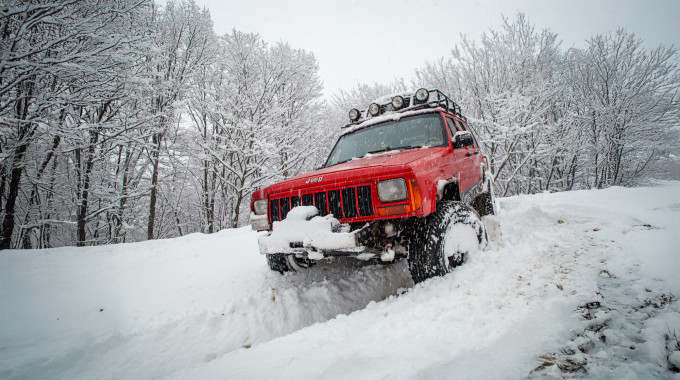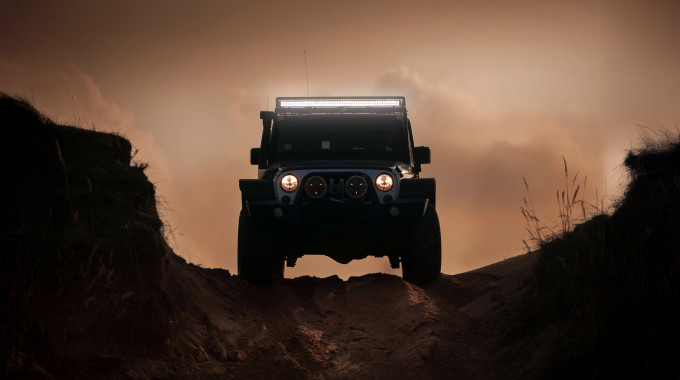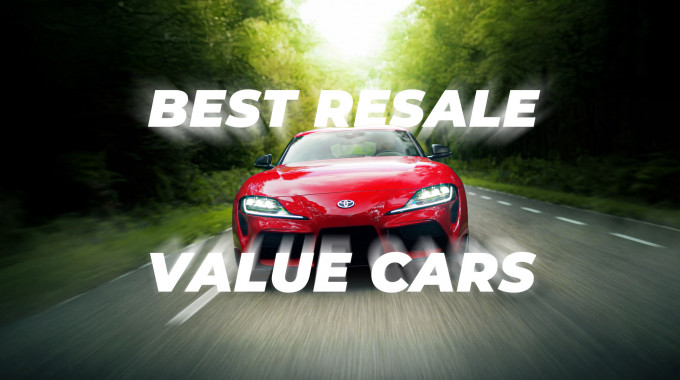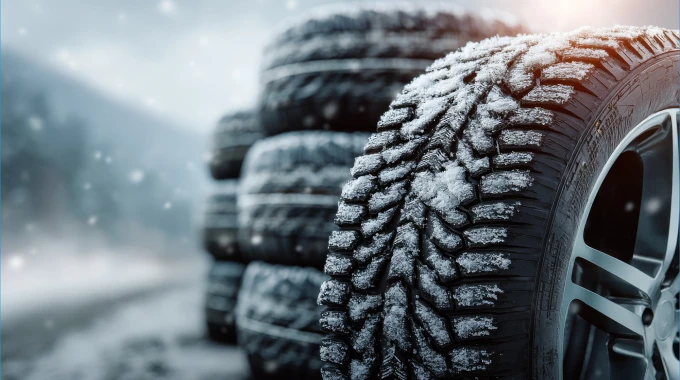
Oct 3, 2025
Best Winter Tires in Canada for 2025: Top Picks for Snow, Ice & Cold Weather
When temperatures dip below about 7 °C and snow, ice, and slush become common, your standard all-season or summer tires begin to lose grip. That’s when winter tires (often called snow tires) shine, thanks to a specialized rubber compound and a winter tire tread pattern that remains pliable in freezing temperatures, bites into snow, and channels slush and water away to preserve snow traction.
Introduction: Why the Right Winter Tires Matter in Canadian Winters
In 2025, with tire technology advancing, we see even more refined compounds, arctic grip crystals, lower rolling resistance, enhanced siping and biting edges, and better wet roads, icy surfaces, and deep snow performance. The best winter tires of 2025 in Canada must excel across multiple axes: dry and wet roads, ice braking, snow and slush, and durability under extreme cold.
Because vehicle types differ in weight, load, and handling, the best winter tires for SUVs, cars, minivans, EVs, and trucks will vary greatly. Below, I break it down by vehicle class, and then cover studded winter tires, which remain popular in truly harsh climates.
Throughout this article, we evaluate the strengths and drawbacks of each candidate (3–5 tires per type of vehicle), and note key tradeoffs in overall performance, winter grip, and typical drawbacks (noise, cost, wear, poor performance on dry roads, etc.).
Let’s dive in.
Best Winter Tires of 2025 for SUVs
SUVs (crossover or full-size) are very popular in Canada, but their extra weight and higher center of gravity impose greater demands on winter tires. The right winter tires must deliver superior traction without compromising dry braking, wet handling, or fuel efficiency.
Here are 4 standout options for SUVs in 2025:
1. Michelin X-Ice Snow (SUV version)
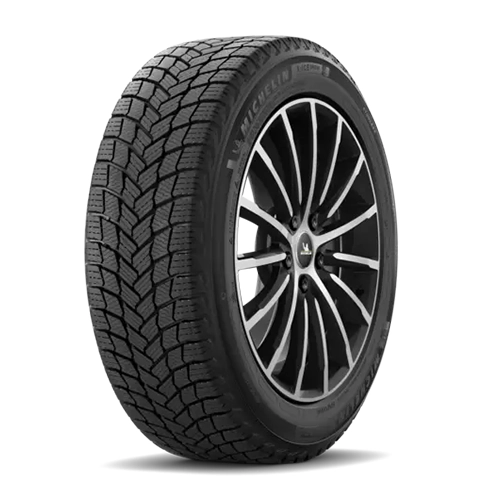
Features / Highlights
-
Based on the same Michelin X-Ice Snow line but optimized for heavier vehicles, with reinforced sidewalls and broader tread footprint.
-
Uses advanced silica-infused compound plus arctic grip crystals to maintain pliability at freezing temperatures.
-
Multi-wave sipes and variable pitch tread blocks to reduce noise and optimize icy surfaces grip.
-
Claims of one extra winter’s life compared to competitors. (As reviewed by Car and Driver) Car and Driver
Pros
-
Excellent ice braking and stability on wet roads
-
Strong dry performance for a winter tire (less compromise)
-
Good durability and relatively low rolling resistance for its category
Cons
-
Premium price
-
Somewhat less aggressive in deep snow compared to specialized snow tires
-
On high-speed performance driving, may feel a bit soft
2. Bridgestone Blizzak DM-V2
Features / Highlights
-
Specifically built for crossover and SUV applications, with a compound tuned to retain soft characteristics in extreme cold.
-
Deep tread with multiple biting edges and “multi-wave sipes” for snow and slush evacuation.
-
3PMSF (Three Peak Mountain Snowflake) rating ensures it meets snow tire standards.
Pros
-
Strong snow traction and good ice and snow handling
-
Balanced dry and wet performance for an SUV
-
Good reputation in Canadian winter communities
Cons
-
Not as aggressive on deep, unplowed snow as some specialty studdables
-
Tread life may lag slightly behind top touring winter tires
-
Slight tradeoff in fuel economy vs. ultra low-resistance touring models
3. Nokian Hakkapeliitta R5 SUV
Features / Highlights
-
Nokian’s R5 line has won accolades for combining aggressive grip with reasonable road manners. Car and Driver
-
The SUV version features reinforced internal structure and shoulder blocks for cornering control.
-
The rubber compound includes specialized grip boosters and biting edges optimized for icy roads and snow and ice interaction.
Pros
-
Excellent cornering stability and grip on ice
-
Very good in deep snow
-
Strong reputation in the Canadian winter market
Cons
-
Premium price
-
Slight compromise on dry performance relative to touring-focused winter tires
-
May run noisier in some tire sizes
4. Continental VikingContact 7 (SUV sizes)
Features / Highlights
-
Continental’s VikingContact line is often praised as a top winter tire for general conditions. One of its core strengths is adaptability in snow, slush, and wet conditions.
-
Uses a canola-oil–infused compound to keep flexibility at colder temperatures.
-
Features many biting edges and sipes to preserve grip; often considered among top tier performance winter tires.
Pros
-
Very good overall balance: wet handling, snow traction, and ice grip
-
More affordable relative to premium options
-
Lower rolling resistance than some aggressive winter tires
Cons
-
Not as outstanding as studded or ultra-aggressive options on bare ice
-
Slight compromise in deep snow vs. highly aggressive snow tires
-
Some sizes may have limited availability
Summary for SUV Winter Tires:
If you prioritize all-round excellence, the Michelin X-Ice Snow (SUV) is a top pick. For drivers who demand extra aggressive winter grip, the Nokian Hakkapeliitta R5 SUV is compelling. The Blizzak DM-V2 is a solid mid-to-upper option, and the VikingContact 7 offers a formidable balance of performance, price, and efficiency.
| Tire Model | Snow Traction | Ice Braking | Wet Roads | Rolling Resistance | Price Range |
|---|---|---|---|---|---|
| Michelin X-Ice Snow SUV | ⭐⭐⭐⭐☆ | ⭐⭐⭐⭐☆ | ⭐⭐⭐⭐☆ | ⭐⭐⭐⭐☆ | $$$ |
| Bridgestone Blizzak DM-V2 | ⭐⭐⭐⭐☆ | ⭐⭐⭐⭐☆ | ⭐⭐⭐⭐☆ | ⭐⭐⭐☆☆ | $$ |
| Nokian Hakkapeliitta R5 SUV | ⭐⭐⭐⭐⭐ | ⭐⭐⭐⭐☆ | ⭐⭐⭐☆☆ | ⭐⭐☆☆☆ | $$$$ |
| Continental VikingContact 7 | ⭐⭐⭐⭐☆ | ⭐⭐⭐☆☆ | ⭐⭐⭐⭐☆ | ⭐⭐⭐⭐☆ | $$ |
Best Winter Tires of 2025 for Cars (Sedans, Coupes, Hatchbacks)
Passenger cars typically demand a balance between performance and comfort. You don’t want a winter tire that feels mushy or mushes during cornering, but you also want real winter grip, not just a soft tread.
Here are 4 excellent winter tires for cars in 2025:
1. Bridgestone Blizzak WS90 / WS-series (e.g. WS90)
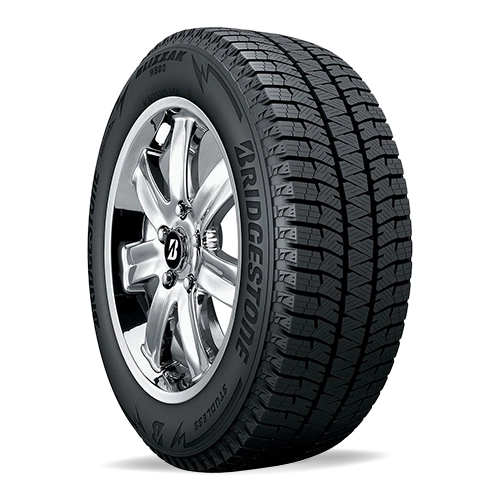
Features / Highlights
-
The WS90 improves on prior generations (WS80) with refreshed tread design and compound.
-
Multi-cell compound helps manage water film and enhances wet grip.
-
Many biting edges and aggressive siping to maintain snow traction.
Pros
-
Excellent ice and snow braking and cornering
-
Strong wet roads performance
-
Wide size availability
Cons
-
Slightly higher noise levels compared to more touring-oriented options
-
More aggressive patterns tend to wear faster on dry blacktop
-
Premium cost
2. Michelin X-Ice Snow (Passenger version)
Features / Highlights
-
Directly built for regular passenger vehicles.
-
Michelin touts lower rolling resistance and better hydroplaning resistance for the X-Ice Snow.
-
Balance of winter grip and fair dry performance thanks to refined rubber compound.
Pros
-
Very confident ice braking
-
Good dry braking and handling for a winter tire
-
Excellent durability and long-term performance
Cons
-
Again, premium price
-
Not as extreme in deep snow as heavy-duty winter tires
-
Some sizes limited
3. Nokian Hakkapeliitta R5
Features / Highlights
-
Retailers in Canada (e.g. Kal Tire) list the Hakkapeliitta R5 among top performers for passenger categories. Kaltire
-
Highly aggressive bite, multiple grip boosters, and strong ice performance.
-
Excellent in icy driving conditions and heavy winter slush.
Pros
-
Some of the best snow traction and ice performance
-
Good in deeper snow
-
Great control on slippery roads
Cons
-
More compromise on dry and dry braking than more touring-oriented winter tires
-
Higher cost
-
Tire sizes and inventory might be limited in some Canadian regions
4. Continental VikingContact 7
Features / Highlights
-
A balanced top winter tire with strengths across wet, snow, and ice.
-
The canola-oil–infused rubber helps maintain flexibility in cold and reduce rolling resistance.
-
Plenty of biting edges for deep snow grip. Telle Tire
Pros
-
Good all-around performer (not extreme but strong)
-
More budget-friendly than some premium options
-
Better fuel economy for those concerned with low rolling resistance
Cons
-
On bare ice or extreme conditions, it may lag behind studded or ultra-aggressive competitors
-
Slight compromise in dry performance
-
In rare sizes, limited availability
5. (Bonus) Pirelli P Zero Winter / P Zero Winter 2
Features / Highlights
-
Though more performance-oriented, the Pirelli P Zero Winter 2 is gaining recognition in performance winter tests.
-
It combines sporty handling with winter capability—a useful option for drivers who also demand sharp cornering.
Pros
-
Very good dry and wet handling by winter tire standards
-
Strong snow performance in tests
-
Maintains a sportier drive feel
Cons
-
Slightly higher rolling resistance in some sizes
-
Not as extreme on pure ice compared to studded options
-
Price premium over standard winter touring models
Summary for Car Winter Tires:
If your priority is all-around confidence on ice and snow, the Michelin X-Ice Snow (passenger) is a strong all-rounder. The Blizzak WS90 leans more into gripping performance, while Nokian R5 pushes further into aggressive winter territory. VikingContact 7 offers a balanced alternative, and P Zero Winter 2 is a niche pick for those wanting a bit of sportiness with winter safety.
| Tire Model | Snow Traction | Ice Braking | Wet Roads | Rolling Resistance | Price Range |
|---|---|---|---|---|---|
| Michelin X-Ice Snow | ⭐⭐⭐⭐☆ | ⭐⭐⭐⭐☆ | ⭐⭐⭐⭐☆ | ⭐⭐⭐⭐☆ | $$$ |
| Bridgestone Blizzak WS90 | ⭐⭐⭐⭐☆ | ⭐⭐⭐⭐☆ | ⭐⭐⭐⭐☆ | ⭐⭐⭐☆☆ | $$ |
| Nokian Hakkapeliitta R5 | ⭐⭐⭐⭐⭐ | ⭐⭐⭐⭐☆ | ⭐⭐⭐☆☆ | ⭐⭐☆☆☆ | $$$$ |
| Continental VikingContact 7 | ⭐⭐⭐⭐☆ | ⭐⭐⭐☆☆ | ⭐⭐⭐⭐☆ | ⭐⭐⭐⭐☆ | $$ |
| Pirelli P Zero Winter 2 | ⭐⭐⭐⭐☆ | ⭐⭐⭐☆☆ | ⭐⭐⭐⭐☆ | ⭐⭐⭐☆☆ | $$$$ |
Best Winter Tires of 2025 for Minivans
Minivans carry heavier loads and often carry families, so safety and predictability are critical. You want a winter tire that offers stability, consistent braking, and confidence in icy conditions and snowy roads.
Here are 3–4 choices that stand out for minivan use:
1. Nokian Hakkapeliitta R5
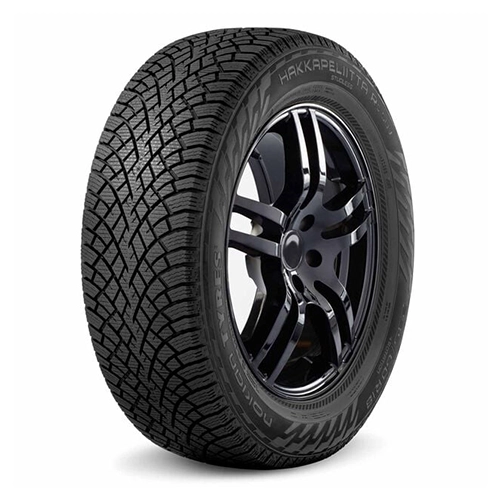
Features / Highlights
-
The R5’s aggressive tread and grip enhancements make it a strong pick for heavier and loaded vehicles like minivans.
-
Known for its ability to maintain winter grip even under heavier loads.
Pros
-
Very good performance in snow and ice
-
Strong control and confidence under full loads
-
Reputation in cold Canadian markets
Cons
-
Higher cost
-
Slight trade-offs in dry braking
-
Some sizes may be harder to find
2. Michelin X-Ice Snow
Features / Highlights
-
Its versatility and balanced performance make it a go-to even for heavier, multi-passenger vehicles like minivans.
-
The compound and tread design deliver superior traction in snow and ice while maintaining decent dry performance.
Pros
-
Excellent grip when it matters
-
Good longevity and consistent performance
-
Smooth and stable ride
Cons
-
Pricier per tire
-
In deeper snow or off-path, not as aggressive as niche snow tires
3. Bridgestone Blizzak WS90
Features / Highlights
-
Well-known and widely available, the WS90 is often used as a reliable winter tire for family vehicles.
-
Good balance between grip, comfort, and cost.
Pros
-
Excellent in snow and ice
-
Strong wet roads performance
-
Good brand support and availability
Cons
-
May generate more noise
-
Tread wear might be shorter than touring models
-
On dry blacktop, not the top performer
4. Continental VikingContact 7 (or equivalent size)
Features / Highlights
-
Its balanced performance across conditions makes it a viable option for minivans, especially in milder or mixed winter conditions.
-
Lower rolling resistance aids fuel economy.
Pros
-
Great all-rounder (not extreme, but safe and dependable)
-
More affordable than ultra-premium models
-
Better economy when not driving in extreme conditions
Cons
-
Less grip than studded or ultra-aggressive snow tires
-
Slight compromises on deep snow or black ice
-
Not the top choice for performance-demanding drivers
Summary for Minivan Winter Tires:
The top safe bets for minivans are Michelin X-Ice Snow, Nokian Hakkapeliitta R5, and Bridgestone Blizzak WS90. If you prefer a more balanced or economical option, VikingContact 7 is a worthy pick. For family vehicles, reliability, consistency, and safety outweigh marginal gains in performance.
| Tire Model | Snow Traction | Ice Braking | Wet Roads | Rolling Resistance | Price Range |
|---|---|---|---|---|---|
| Michelin X-Ice Snow | ⭐⭐⭐⭐☆ | ⭐⭐⭐⭐☆ | ⭐⭐⭐⭐☆ | ⭐⭐⭐⭐☆ | $$$ |
| Bridgestone Blizzak WS90 | ⭐⭐⭐⭐☆ | ⭐⭐⭐⭐☆ | ⭐⭐⭐⭐☆ | ⭐⭐⭐☆☆ | $$ |
| Nokian Hakkapeliitta R5 | ⭐⭐⭐⭐⭐ | ⭐⭐⭐⭐☆ | ⭐⭐⭐☆☆ | ⭐⭐☆☆☆ | $$$$ |
| Continental VikingContact 7 | ⭐⭐⭐⭐☆ | ⭐⭐⭐☆☆ | ⭐⭐⭐⭐☆ | ⭐⭐⭐⭐☆ | $$ |
Best Winter Tires of 2025 for Electric Cars (EVs)
Electric vehicles impose unique demands: heavier weight (battery packs), instant torque, regenerative braking, and sensitivity to rolling resistance. A good winter tire for EVs must manage energy efficiency while delivering confident winter grip, low noise, and longevity.
Here are 3–4 top contenders for EVs:
1. Continental VikingContact 7 (if available in EV sizes)
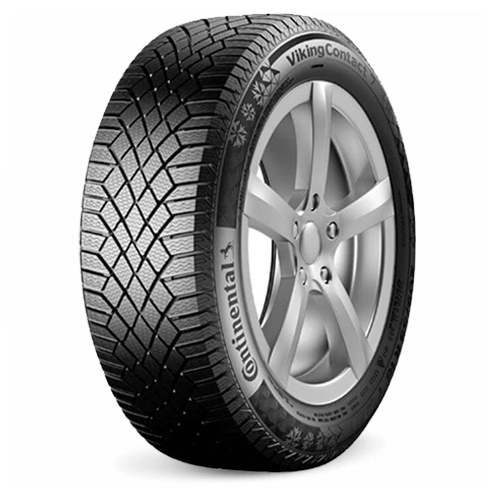
Features / Highlights
-
Its reputation as a balanced performer (snow, ice, wet) may make it a reasonable choice when EV-specific models are not available.
-
Lower rolling resistance helps with EV range penalty mitigation.
Pros
-
Solid all-round performance
-
Better energy efficiency vs. aggressive winter tires
-
Good value per performance
Cons
-
Not as strong in extreme ice or deep snow
-
Performance compromise in dry driving
-
Limited aggressive grip in demanding winter conditions
2. Nokian Hakkapeliitta R5 / R5 EV
Features / Highlights
-
Nokian markets an EV-specific variant of R5 (R5 EV), tuned to reduce rolling resistance and handle heavier loads.
-
Strong grip via aggressive compound and tread design, built-in arctic grip crystals, and excellent cold-weather behavior. Kal Tire lists the R5 among top winter tires for EVs.
Pros
-
Excellent balance of winter grip and reasonable efficiency
-
Strong performance on snow and ice
-
Reputable in Canadian winters
Cons
-
Premium cost
-
On dry roads, the tradeoff for grip may reduce performance slightly
-
Availability may lag in rare EV sizes
2. Michelin X-Ice Snow (or a version tuned for EV)
Features / Highlights
-
Because it already performs strongly in ice and snow while managing rolling resistance, it is a strong candidate for EVs.
-
Its low rolling resistance design helps maximize range in colder months.
Pros
-
Good balance among ice braking, dry performance, and efficiency
-
Durable and consistent in cold start performance
-
Smooth, stable ride
Cons
-
Not as aggressive in deep snow or on pure ice as studded options
-
Price remains high
-
Not specifically marketed for EVs (unless Michelin releases an EV-specific variant)
3. Bridgestone Blizzak DM-V2 / WS90 (EV sizes)
Features / Highlights
-
Some EVs are cross-shod with SUV or performance winter tires; DM-V2 is good for heavier, torque-heavy vehicles.
-
Strong grip in winter conditions, though more compromise in efficiency.
Pros
-
Reliable winter performance
-
Good wet/slush handling
-
Decent brand support
Cons
-
Greater energy penalty / higher rolling resistance compared to ultra low-resistance options
-
More trade-offs in dry driving
-
May not be optimized for EV regenerative braking
Summary for EV Winter Tires:
If you drive an EV and demand both winter safety and energy efficiency, Nokian Hakkapeliitta R5 EV is one of the best modern solutions. The Michelin X-Ice Snow is also a top choice if available in your size. Use Blizzak or VikingContact as good alternatives when EV-specific tires aren’t available.
| Tire Model | Snow Traction | Ice Braking | Wet Roads | Rolling Resistance | Price Range |
|---|---|---|---|---|---|
| Nokian Hakkapeliitta R5 EV | ⭐⭐⭐⭐⭐ | ⭐⭐⭐⭐☆ | ⭐⭐⭐☆☆ | ⭐⭐⭐⭐☆ | $$$$ |
| Michelin X-Ice Snow | ⭐⭐⭐⭐☆ | ⭐⭐⭐⭐☆ | ⭐⭐⭐⭐☆ | ⭐⭐⭐⭐☆ | $$$ |
| Bridgestone Blizzak DM-V2 | ⭐⭐⭐⭐☆ | ⭐⭐⭐⭐☆ | ⭐⭐⭐☆☆ | ⭐⭐⭐☆☆ | $$ |
| Continental VikingContact 7 | ⭐⭐⭐⭐☆ | ⭐⭐⭐☆☆ | ⭐⭐⭐⭐☆ | ⭐⭐⭐⭐☆ | $$ |
Best Winter Tires for Trucks / Light Trucks / Heavy Vehicles
Trucks and light trucks (including pickups used in rural or heavy-duty applications) require tires that can deal with heavier payloads, torque, variable loads, and often challenging terrain (snow-packed driveways, rural backroads, etc.). In many cases, you might combine winter tires with all-terrain or mixed-use winter / all-season models.
Here are top options for trucks in 2025:
1. Nokian Hakkapeliitta LT3 / LT3 studded versions
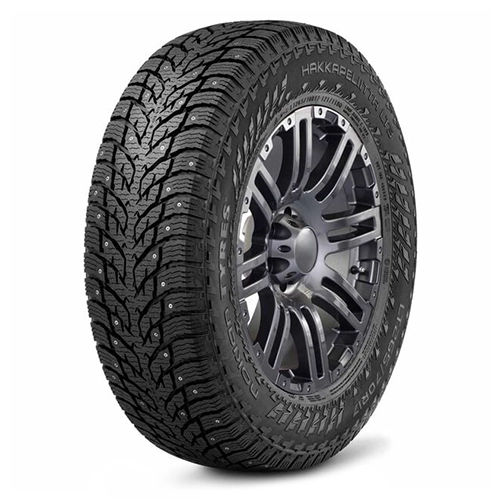
Features / Highlights
-
Designed for light trucks and SUVs with heavier duty demands.
-
Strong on snow and ice, with robust structure for load carry.
-
The studded version is also a formidable performer in severe winter conditions. Kal Tire lists LT3 in its studded category. Kaltire
Pros
-
Excellent snow and ice traction under load
-
Durable build
-
Good for plowed roads, driveways, and mixed conditions
Cons
-
On dry asphalt, may feel less refined
-
Fuel efficiency is compromised due to heavier build
-
Price premium vs consumer winter tires
2. Bridgestone Blizzak DM-V2 / DM-V2 LT
Features / Highlights
-
The DM-V2 LT is tuned for light trucks, with wider footprint, reinforced sidewalls.
-
Strong performance in snow and ice, with multi-sipe design.
Pros
-
Balanced winter grip and handling
-
Reasonable availability
-
Strong brand support
Cons
-
Efficiency and dry performance are not ideal
-
Wear may be faster on blacktop sections
-
Noise may be more noticeable
3. Goodyear Ultra Grip Arctic 2 (if available in light truck sizes)
Features / Highlights
-
Known for strong winter performance in passenger sizes; some LT sizes may be available.
-
Good balance of wet handling, ice traction, and dry roads grip.
Pros
-
Strong winter safety
-
Good wet/ice performance
Cons
-
Limited in very heavy payload conditions
-
May not be optimized for big trucks
4. Continental IceContact XTRM (or equivalents)
Features / Highlights
-
This is a more specialized, aggressive winter tire line often available in commercial / heavy sizes. Some truck drivers in Canada cite IceContact XTRM options when considering studded tires.
Pros
-
Strong winter grip, especially on ice
-
Built for heavier-duty loads
Cons
-
Costly, more abrasive on dry roads
-
Higher rolling resistance
-
May be noisier
Summary for Truck Winter Tires:
For trucks, the Nokian Hakkapeliitta LT3 (with or without studs) is a compelling benchmark. Blizzak DM-V2 LT offers a more balanced option, while IceContact XTRM is ideal when extreme ice performance is needed.
If you operate in mixed terrain or need one tire year-round, some drivers consider all-weather tires or all-terrain all-weather models (though they are not true winter tires). But keep in mind: all-season or all-weather will always be a compromise compared to specialized winter tires in snow, ice, and extreme cold conditions.
| Tire Model | Snow Traction | Ice Braking | Wet Roads | Rolling Resistance | Price Range |
|---|---|---|---|---|---|
| Nokian Hakkapeliitta LT3 (non-studded) | ⭐⭐⭐⭐☆ | ⭐⭐⭐⭐☆ | ⭐⭐⭐☆☆ | ⭐⭐☆☆☆ | $$$$ |
| Bridgestone Blizzak DM-V2 LT | ⭐⭐⭐⭐☆ | ⭐⭐⭐⭐☆ | ⭐⭐⭐☆☆ | ⭐⭐⭐☆☆ | $$$ |
| Continental IceContact XTRM | ⭐⭐⭐⭐☆ | ⭐⭐⭐⭐☆ | ⭐⭐⭐⭐☆ | ⭐⭐☆☆☆ | $$$$ |
Best Studded Winter Tires (2025 Edition)
When roads are relentlessly icy, black ice, or when winter driving is extreme, studded winter tires (tires with embedded metal studs or factory-studded designs) remain among the most high-performance tools in your arsenal. In Canada, their legality and acceptable time windows vary by province, so always check local regulations before installing.
Here are 4 of the strongest studded winter tire options for 2025:
1. Nokian Hakkapeliitta 10 (studded)
Features / Highlights
-
Widely regarded as a top performer in studded winter tire tests.
-
Nokian’s stud placement is optimized: center studs for straight-line grip, shoulder studs for lateral control and lane changes. Kal Tire lists it as their top performer for studded winter tires. Kaltire
-
Excellent for icy conditions and black ice.
Pros
-
Exceptional ice and snow grip, braking, and cornering
-
Very good in slippery and icy roads
-
Confidence in worst-case scenarios
Cons
-
On dry or asphalt, performance and dry braking suffer
-
Tread wear is steeper
-
Legal restrictions in many jurisdictions (seasonal limits, stud count limits)
-
Increased noise
2. Bridgestone Blizzak Spike-03
Features / Highlights
-
A modern studded option from Bridgestone. In stud test comparisons, the Spike-03 shows strong grip and hydroplaning resistance, though some mounting issues were noted.
-
Multi-stud design optimized for cold and wet surfaces.
Pros
-
Very good in ice braking and winter grip
-
Better hydroplaning resistance compared to older studded models
Cons
-
Stud mounting concerns (loosening, movement) noted in some tests
-
Compromised dry and wet performance
-
Noise and harsher ride
3. Michelin X-Ice North 4 (studded / studdable)
Features / Highlights
-
Michelin’s X-Ice North 4 is built for extreme winter climates, with interlocking 3D sipes plus innovative stud design to maximize grip in severe cold. Michelin Canada
-
A viable option in the studded category, often cited in Canadian forums as an alternative to Nokian.
Pros
-
Good balance between studded grip and overall tire behavior
-
Strong in icy surfaces and cold conditions
-
Better than many older studded options in wet/slush
Cons
-
Not outperforming the Nokian in pure studded tests
-
Price premium
-
Like all studded, dry-road compromise and noise
4. Nordman North 9 (studded, value option)
Features / Highlights
-
A value-oriented studded tire often listed by Canadian retailers as a student-friendly or budget studded option.
-
Offers functional studded grip in more affordable packaging.
Pros
-
Lower cost entry into studded capability
-
Decent grip in winter conditions
Cons
-
Less refined, may lag in consistency
-
More compromise in wet and dry performance
-
High noise, limited availability
Summary of Studded Tires:
If studded performance is an absolute necessity in your driving conditions, Nokian Hakkapeliitta 10 (studded) is widely considered the top pick. Blizzak Spike-03 and X-Ice North 4 (studded) are solid alternatives, and Nordman North 9 studded offers a value option. Always check your provincial laws for studded tire use windows and restrictions.
Comparative Factors, Tips & How to Choose the Right Winter Tires
Choosing the right winter tires is not just about picking names—there are tradeoffs, fitment, and use patterns to consider. Here is a guide to making the best decision in 2025 Canada.
1. Understand Tire Ratings & Symbols
-
Always seek the 3PMSF (Three Peak Mountain Snowflake) marking — this distinguishes true winter (snow) tires from softer all-season compounds.
-
Compare rolling resistance, treadwear, ice braking and snow traction test results (from independent testers or retailers).
-
Some manufacturers advertise arctic grip crystals, specialized biting edges, or stud-ready designs — these can tip the balance when comparing models.
2. Balance Performance vs Efficiency
Aggressive winter tires (especially studded) often sacrifice dry performance, fuel economy, and produce more noise. If your driving includes many non-winter days or highway usage, you’ll want something that keeps dry braking and wet handling reasonable while maintaining superior winter grip.
3. Match Tire to Your Driving Environment
-
Urban/suburban commuters typically benefit from balanced winter tires.
-
Rural, mountainous, or backroad drivers might lean toward studded or more aggressive models.
-
Electric vehicles need special consideration regarding rolling resistance to preserve range.
-
Trucks or loaded vehicles require robust handling, load ratings, and reinforced structure.
4. Use a Full Set of Four
Never mix winter tires with summer or all-season tires; always mount four winter tires. Mismatched traction can upset handling, especially under braking or cornering in icy conditions.
5. Rotate, Maintain, Monitor
-
Rotate tires regularly throughout the winter to prevent uneven wear.
-
Keep tire pressures correct (cold pressure) — in cold, under-inflation magnifies wear and reduces performance.
-
Monitor tread depth and condition — as performance degrades with wear, your safety margin shrinks.
6. Consider Replacement Timing
If your tires are worn toward the legal or safety limits, upgrading to a new high-performance winter tire can bring significant gains in ice braking, snow traction, and overall confidence.
7. Regional Legality & Timing for Studded Use
Many Canadian provinces allow studded tires only during specific windows (e.g., October to April). Some restrict the number of studs per tire or total protrusion. Always verify your local regulations before purchasing or using studded tires.
Conclusion & Final Recommendations
When winter hits in Canada, the right winter tires make the difference between safe, confident driving and sliding, long braking, or worse. The best winter tires of 2025 harness advanced rubber compounds, optimized winter tire tread, and innovations like arctic grip crystals or precise stud placement to handle freezing temperatures, snow traction, ice braking, and wet roads.
Here’s a quick recap:
-
For SUVs, look at Michelin X-Ice Snow (SUV), Blizzak DM-V2, Nokian Hakkapeliitta R5 SUV, or VikingContact 7 as a balanced pick.
-
For cars, top options are Blizzak WS90, Michelin X-Ice Snow, Nokian R5, VikingContact 7, or P Zero Winter 2 if you want sportiness.
-
For minivans, prioritize Michelin X-Ice Snow, Nokian R5, Blizzak WS90, and VikingContact 7, focusing on load stability and predictability.
-
For electric vehicles, go with models tuned for low rolling resistance and winter grip — like Nokian R5 EV, Michelin X-Ice Snow, or comparable alternatives.
-
For trucks / light trucks, use heavy-duty winter tires like LT3, Blizzak DM-V2 LT, or IceContact XTRM when severe winter use is needed.
-
For studded winter tires, Nokian Hakkapeliitta 10 (studded) leads the pack, with Blizzak Spike-03, X-Ice North 4 studded, and Nordman North 9 studded as alternatives depending on budget and local stud-permission laws.
No one tire is perfect. The ideal winter tire is the one that best matches your vehicle type, your local winter demands (snow, black ice, rural roads vs urban), and your tolerance for tradeoffs in noise, cost, and dry performance. But by choosing among these top winter tires of 2025, you’ll be confident that you’re starting from the very best performers available.
Read more:
When Should You Put on Winter Tires & Take Them Off?
How Long Do Winter Tires Last & How Do You Maximize Their Life?
Winter Tire Costs & 5 Money-Saving Tips
Winter Tire FAQs
What makes winter tires different from all-season tires?
Winter tires use a softer rubber compound that stays flexible in freezing temperatures, unlike all-season tires that harden and lose grip in the cold. They also feature deeper tread patterns, more biting edges, and sipes designed to channel away snow and slush. This combination provides superior traction, braking, and control in winter conditions.
How does winter tire tread improve traction in snow and ice?
Winter tire tread has deep grooves and dense siping that bite into snow and ice, creating better grip and stability. These specialized tread blocks push away slush and pack snow into the tread, using snow-on-snow friction to boost traction. The result is shorter stopping distances and more confident handling on icy roads.
Why does rubber compound matter for winter tires?
The rubber compound determines how well a tire stays flexible in cold weather. Winter tires use silica-rich compounds engineered to stay soft in sub-zero temperatures, which improves grip on ice and hard-packed snow. All-season tires stiffen in the cold, leading to poor performance and longer braking distances in winter conditions.
Do winter tires help with braking performance on wet roads?
Yes. Winter tires are designed with advanced tread patterns and water-evacuating channels that reduce hydroplaning and improve wet road braking. Their flexible rubber maintains contact with the pavement even in cold, rainy conditions, giving them better stopping power than all-season tires in winter weather.
What are arctic grip crystals and do they actually work?
Arctic grip crystals are microscopic traction particles embedded in some premium winter tires (like Nokian) to enhance grip on icy surfaces. As the tire wears, new crystals are exposed, maintaining traction over time. In independent tests, these crystals significantly improve ice braking and cornering, making them effective in demanding winter conditions.
Are studded winter tires better than regular winter tires?
Studded winter tires offer the best traction on glare ice and hard-packed snow because the metal studs dig into the surface. However, they can be noisy, rough on dry pavement, and sometimes restricted by provincial laws. For most Canadian drivers, modern studless winter tires provide excellent performance with fewer compromises, but studded tires still outperform in extreme icy conditions.
How do winter tires perform on dry roads?
On dry pavement, winter tires offer good grip but may feel softer and less precise than all-season or summer tires due to their flexible compound. They can also increase braking distances and cornering roll at higher temperatures. That’s why it’s best to switch back to non-winter tires once temperatures consistently rise above 7 °C.
Do winter tires have worse fuel efficiency due to rolling resistance?
Yes — most winter tires have higher rolling resistance than all-season tires because of their softer compound and deeper tread. This can lead to a small drop in fuel efficiency during the winter months. However, some premium models are designed for low rolling resistance, which helps reduce the impact on fuel economy while maintaining winter grip.


